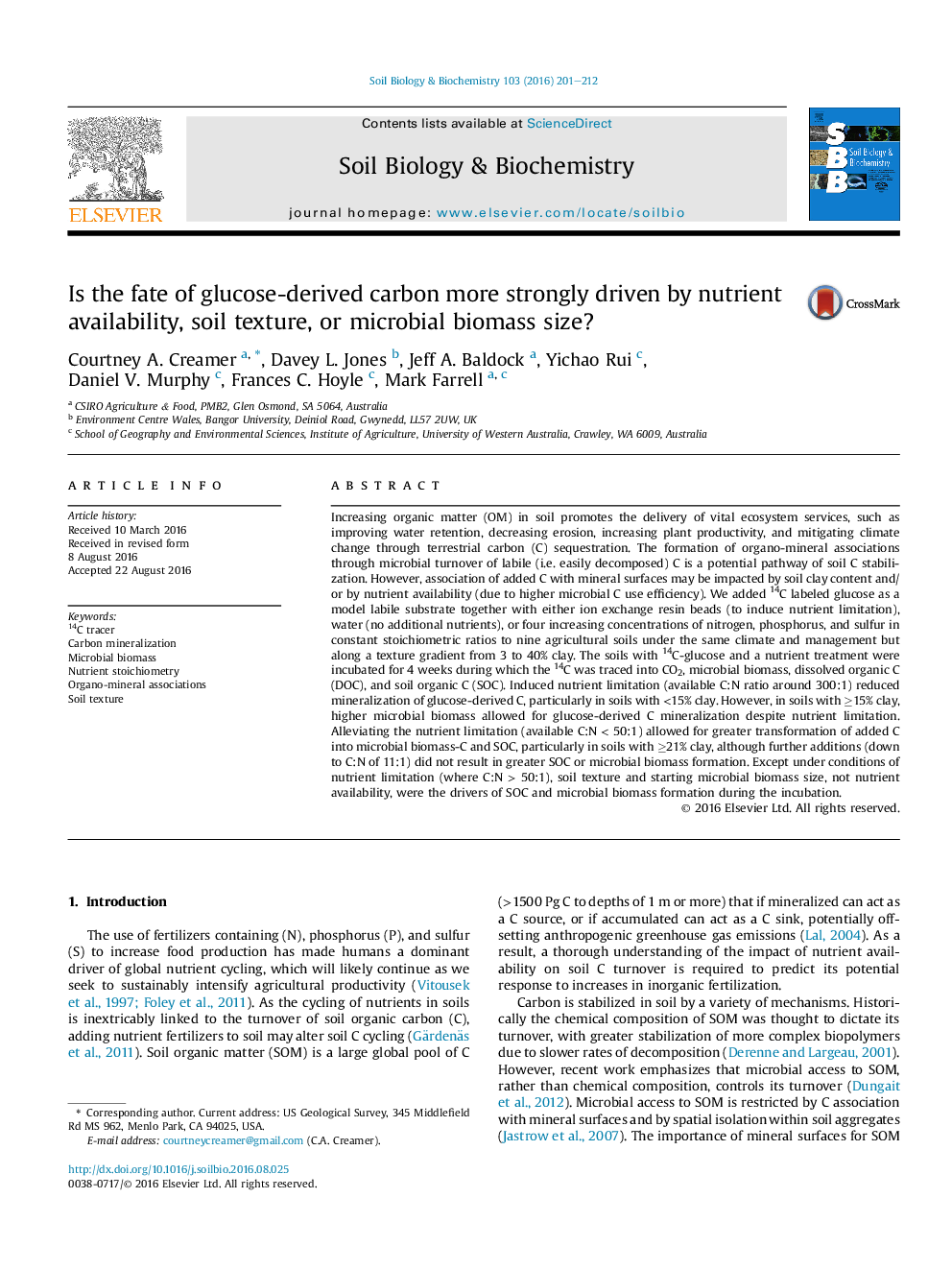| کد مقاله | کد نشریه | سال انتشار | مقاله انگلیسی | نسخه تمام متن |
|---|---|---|---|---|
| 8363239 | 1542581 | 2016 | 12 صفحه PDF | دانلود رایگان |
عنوان انگلیسی مقاله ISI
Is the fate of glucose-derived carbon more strongly driven by nutrient availability, soil texture, or microbial biomass size?
ترجمه فارسی عنوان
آیا سرنوشت کربن ناشی از گلوکز به شدت به وسیله در دسترس بودن مواد مغذی، بافت خاک یا اندازه زیست توده های میکروبی موثر است؟
دانلود مقاله + سفارش ترجمه
دانلود مقاله ISI انگلیسی
رایگان برای ایرانیان
کلمات کلیدی
موضوعات مرتبط
علوم زیستی و بیوفناوری
علوم کشاورزی و بیولوژیک
دانش خاک شناسی
چکیده انگلیسی
Increasing organic matter (OM) in soil promotes the delivery of vital ecosystem services, such as improving water retention, decreasing erosion, increasing plant productivity, and mitigating climate change through terrestrial carbon (C) sequestration. The formation of organo-mineral associations through microbial turnover of labile (i.e. easily decomposed) C is a potential pathway of soil C stabilization. However, association of added C with mineral surfaces may be impacted by soil clay content and/or by nutrient availability (due to higher microbial C use efficiency). We added 14C labeled glucose as a model labile substrate together with either ion exchange resin beads (to induce nutrient limitation), water (no additional nutrients), or four increasing concentrations of nitrogen, phosphorus, and sulfur in constant stoichiometric ratios to nine agricultural soils under the same climate and management but along a texture gradient from 3 to 40% clay. The soils with 14C-glucose and a nutrient treatment were incubated for 4 weeks during which the 14C was traced into CO2, microbial biomass, dissolved organic C (DOC), and soil organic C (SOC). Induced nutrient limitation (available C:N ratio around 300:1) reduced mineralization of glucose-derived C, particularly in soils with <15% clay. However, in soils with â¥15% clay, higher microbial biomass allowed for glucose-derived C mineralization despite nutrient limitation. Alleviating the nutrient limitation (available C:N < 50:1) allowed for greater transformation of added C into microbial biomass-C and SOC, particularly in soils with â¥21% clay, although further additions (down to C:N of 11:1) did not result in greater SOC or microbial biomass formation. Except under conditions of nutrient limitation (where C:N > 50:1), soil texture and starting microbial biomass size, not nutrient availability, were the drivers of SOC and microbial biomass formation during the incubation.
ناشر
Database: Elsevier - ScienceDirect (ساینس دایرکت)
Journal: Soil Biology and Biochemistry - Volume 103, December 2016, Pages 201-212
Journal: Soil Biology and Biochemistry - Volume 103, December 2016, Pages 201-212
نویسندگان
Courtney A. Creamer, Davey L. Jones, Jeff A. Baldock, Yichao Rui, Daniel V. Murphy, Frances C. Hoyle, Mark Farrell,
